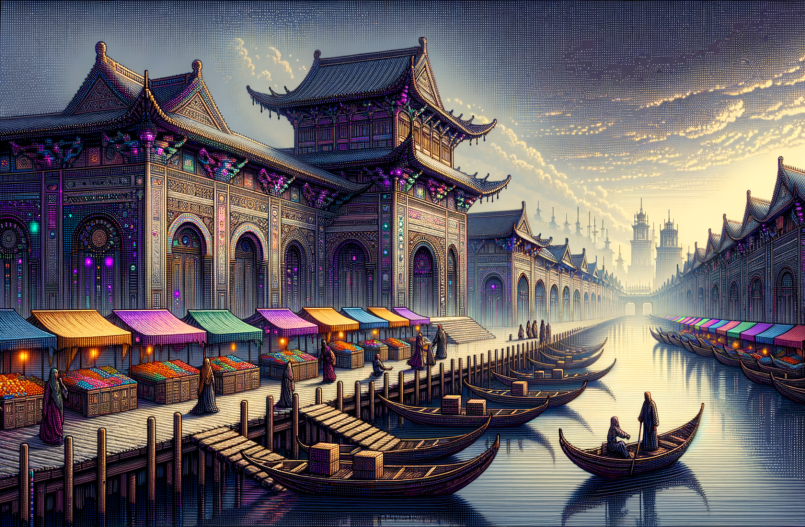In the historical context of El Territorio, El Mercado serves as a pivotal case study, progressing from a simple coastal settlement to an established trading hub known throughout the world of Arcadia (previously known as Arcadia before the extinction of the ancient Lootians).
Initially, El Mercado was a sanctuary for local fishermen and small-scale traders to sell their merchandise. However, over the years, the city flourished, becoming the top trading center in El Territorio.
Free trade emerged as the foundational pillar upon which El Mercado anchored its success. Without strict regulation from authorities, merchants and traders could buy and sell freely. This open market system attracted traders from all over the world, making El Mercado a central meeting point for all kinds of goods: spices from the Far East, luxurious silks from Royaume de Satoshi, and valuable metals from the mountains.
Geographically, the city’s coastal location strategically positioned it as a gateway to the broader regions of El Territorio, helping it become a key trading center. Sea traders from all over the world were attracted by El Mercado’s wealth, leading to the further development and expansion of the city. El Mercado’s rise wasn’t just about its growing economy but also about becoming a center of power. The leaders smartly used the growing wealth to develop structures and buildings to attract more traders, ensuring that wealth and a variety of goods kept flowing in.
The El Mercado building, named after the city itself, is the most famous structure in the region and was designed by renowned architect Roshan Dupoy. Since discovering its value in ancient Arcadia, we’ve recognized and protected it as a historical building.
Additionally, El Mercado’s growing wealth created a lively center for culture and art. Artists from all over the world were drawn to the city, fueled by its richness and clear support from its leaders. The rulers understood that this boost in culture and art would strengthen El Mercado’s reputation as a place of wealth and cultural sophistication. Comparing El Mercado’s strategies and policies with those of other historically prosperous civilizations on Earth helps us understand its role in Arcadia’s history, linking its story to a larger historical context.
El Mercado represents the possibilities that come with free trade and cultural diversity. Exploring its growth, power shifts, and cultural and social effects gives us insights into Arcadia’s unique and diverse trade systems. This story of business and culture goes beyond its time.



